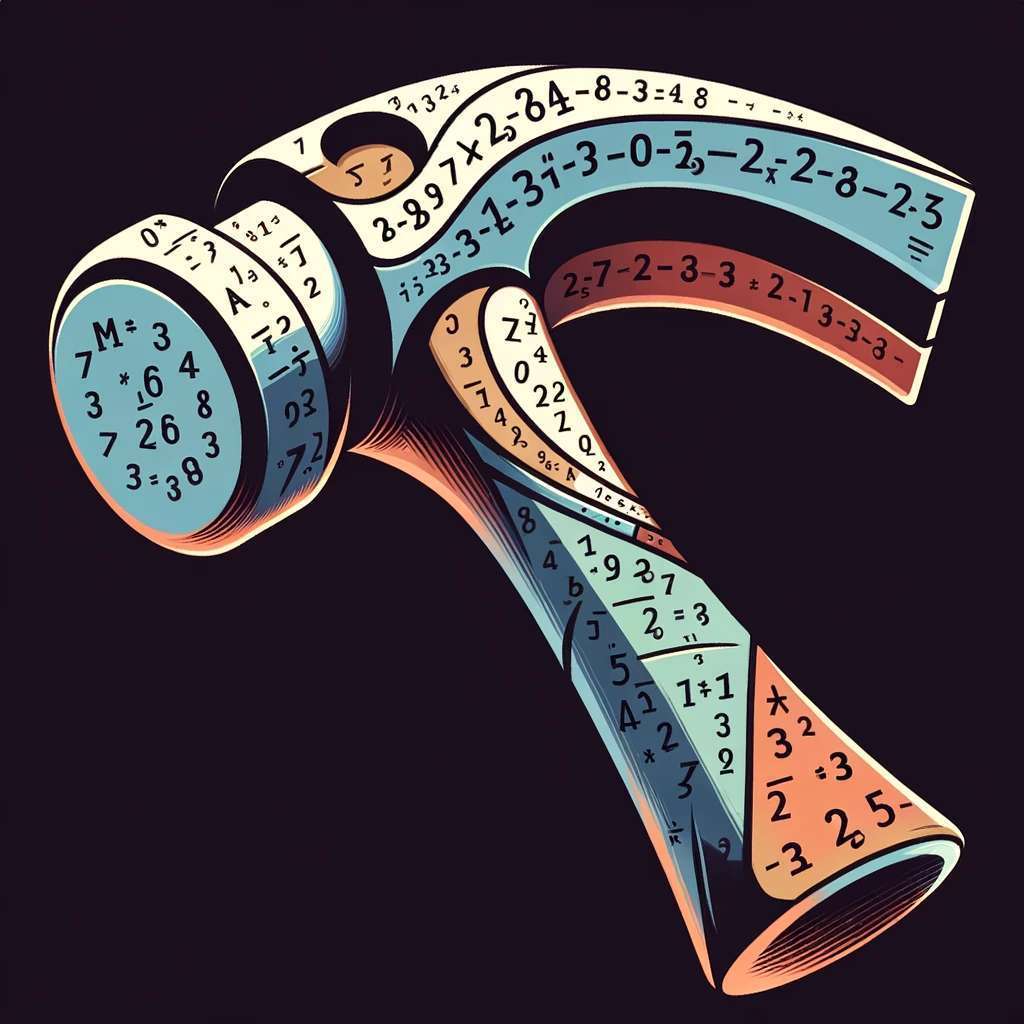
What follows is a solution to ZK Hack IV, Puzzle 2. ZK Hack is a series of zero-knowledge cryptography CTFs, workshops, hackathons, and study groups. Thanks to the ZK Hack organizers for creating this CTF, Geometry for this puzzle, and the ZK Hack community. You might also be interested in solution for puzzle 1. If reposting elsewhere, find this post on my blog here.
You might be interested in this post if you’re interested in:
- a smattering of zk-related trivia about elliptic curve pairing assumptions and proofs of knowledge
- The process of (cryptographic) puzzle solving
Recommended reading order:
- read this post top to bottom for a concise description and solution of the puzzle, then some mathematical detail nuggets to hold onto, and finally the stream of consciousness log of problem solving.
- read this post back to front for the order in which it was actually written (problem solving log, then cleaned up and bloggified knowledge nuggets).
puzzle.solve()
Background
all the knowledge nuggets you need to solve the puzzle
In this puzzle we are tasked with exploiting a BLS Signature scheme with a home-baked proof of knowledge argument.
BLS background
The BLS signature scheme is a simple signature aggregation scheme, relying on a elliptic curve pairing. It consists of 3 algorithms, (sign, aggregate_signatures, verify), where verify checks either any individual’s signature, or the whole aggregated signature.
-
Individual signing - Each individual signature
-
Individual signature verification and aggregated verification - Verification for any individual signature
-
Signature aggregation - Simply compute the sum of the signatures and sum of public keys:
Proof of knowledge argument background
As noted above, we don’t verify the individual signatures. A malicious party could therefore choose public key without even knowing the corresponding secret key. The proof of knowledge intends to prevent that.
Instead, we require each party
Back to the problem at hand
In the case of this problem, the implementer modifies the BLS signature verification algorithm, negating the message hash:
where
However, we do not have a way obtain our own secret key
|
|
Note that instead of:
We now demonstrate the exploit.
==🔴Stop! This is the 🚨puzzle solving police🚨! You have been given everything you need to find your own solution! Take ten minutes, pull out your pen, and reap the joy and mathematical gainz of problem solving🔴==
.
.
.
.
.
.
.
.
.
the ‘sploit
The puzzle solution in short Let’s revisit that randomness algorithm.
|
|
That is, let
You thought this would be harder didn’t you? I certainly did. Well, a sanity-check test is in order:
|
|
a test on the malleability in the randomness
This shows that, by the malleability of the randomness, we can solve for our
|
|
And then enjoy a pamplemousse sparkling water to celebrate our triumph.
 dalle, upon being asked for triumphant pamplemousse
dalle, upon being asked for triumphant pamplemousse
puzzle.deets()
extended background on the B-KEA and KOSK assumptions
The puzzle gives a pair of resources that I didn’t mention. Resources like these tend to assume things like “you won’t stick a knife in your gut on purpose by choosing a malleable source of randomness”. But we did do that, so the resources are maybe only helpful for a little background context for the problem.
Therefore, the following notes are short and somewhat irrelevant to solving the problem, but may be interesting tidbits to take with you.
Mary Maller’s paper gives the Bilinear Knowledge of Exponent Assumption (B-KEA). The B-KEA can be succinctly defined as follows: Given a bilinear group
This is maybe a bummer for hacking the problem, but on the whole, net good that we can use pairings in cryptography and not break all our private keys.
The second paper gives the Knowledge of Secret Key (KOSK) assumption, that it is assumed that the possession and use of a secret key is proof of the identity of the user.
Formally, let
In other words, if someone can use
The remainder of Paper 2 gives a series of remarks on multiparty signature schemes with a more in depth coverage of BLS' security than is absolutely necessary to be familiar with.

puzzle.log()
My puzzle solving log, lightly edited for readability. You might be interested in this as a map of my state of mind while thinking about the puzzle. Keeping a log helps navigate overwhelming context dumps, and to avoid doing wrong and/or stupid things repeatedly. I use Obsidian to take these notes, for which I have written an extensive setup and usage guide. My repo can be found here. For taking math notes, I generally use a whiteboard or ipad for my scratch space before writing down my clean notes here, which helps to think n scratch faster.
initial problem description
We are tasked with forging a signature.
Bob has been designing a new optimized signature scheme for his L1 based on BLS signatures. Specifically, he wanted to be able to use the most efficient form of BLS signature aggregation, where you just add the signatures together rather than having to delinearize them. In order to do that, he designed a proof-of-possession scheme based on the B-KEA assumption he found in the the Sapling security analysis paper by Mary Maller [1]. Based the reasoning in the Power of Proofs-of-Possession paper [2], he concluded that his scheme would be secure. After he deployed the protocol, he found it was attacked and there was a malicious block entered the system, fooling all the light nodes…
1: https://github.com/zcash/sapling-security-analysis/blob/master/MaryMallerUpdated.pdf
2: https://rist.tech.cornell.edu/papers/pkreg.pdf
noted keywords:
- delinearize bls signatures
- B-KEA - 1
- proof of possession - 2
Immediate candidates for bugs:
pok_verify- perhaps there’s a corner case thatpok_verifydoesn’t check- aggregation and verification - does it match the BLS spec aggregation step?
The PoK seems more suss than bls, since the we’ve been informed that the implementer designed their own PoK scheme.
initial things to look at, after skimming code
- aggregates public keys correctly? - yes
- aggregate_signature - huh, we construct this, instead of just publishing our individual signature? that’s one vector for not actually knowing our secret, which leaves
pok_verifyas the only other measure bls_verifyverifies sig agg correctly? - yespok_verifyverifies individually proofs correctly? - yes
notes on BLS signatures
a good portion of this comes from copy-pasting my existing notes (e.g. on BLS signatures), and/or telling chatGPT to write a good note on topic for me and editting it
BLS signature aggregation alg:
Individual signing
Each individual signature
Individual verification and BLS verification
Verification for any individual signature
Signature aggregation
Simply compute the sum of the signatures and sum of public keys:
BLS code check
We don’t test the individual signatures for correctness. This seems weird, as noted above.
public keys look correctly aggregated
|
|
But we get to choose the aggregated signature, rather than submitting an individual signature, which seems like an attack vector for sure.
bls signing check
|
|
matches signing algorithm given above,
bls verify check
recall that we don’t verify individual signatures. We have aggregated
bls verification code:
|
|
Looks like we’re taking a negative for some reason. That means our pairing looks like:
Fr that
first shot
Do we win?![3]
|
|
first attempt at soln
Still need to figure out what to put in proof
Do we at least satisfy the BLS check?
|
|
puzzle main, sans pok_ver which we haven’t gotten yet
We do. Very cool. Note that we tried some other stuff to see if we could satisfy bls_verify in some other creative ways too.
but how do we satisfy pok_verify
pok verify code:
|
|
which corresponds to
They actually give us a nice convenience helper to write proofs, thanks Kobi![4]
|
|
which would imply that
We either need to derive
To the reading!
he looks to the reading
revisit keywords:
- delinearize BLS signatures
- neither paper uses the word. chatGPT is reluctant and handwavey to define it. only few mentions appear in a search. chat suggests that it involves checking an additional pairing constraint on a secondary hash function, meaning our OG hash function could be underconstrained.
- B-KEA - feed the paper to chat, who says:
- The Bilinear Knowledge of Exponent Assumption (B-KEA) is defined over group elements and a bilinear map. It states that, if there exists an algorithm that can produce a certain group element in a bilinear group setting, then there also exists an extractor that can compute a related exponent.
- That basically says, if we can produce the faulty proof
- proof of possession - feed the paper to chat, who says:
- Proofs of Possession (PoPs) are mechanisms used to demonstrate that a party possesses a secret key corresponding to a given public key, without revealing the secret key itself. PoPs typically involve the party generating a cryptographic proof, such as a signature using their private key, and then presenting this proof alongside their public key. The verifier checks the proof to ensure that it was indeed created with the corresponding private key. This method ensures that a party cannot claim to own a public key without actually possessing the associated private key.
- that is indeed what we’re trying to break. We want
sk. We havepkwe want to deriveskto break the PoP.
- that is indeed what we’re trying to break. We want
- Proofs of Possession (PoPs) are mechanisms used to demonstrate that a party possesses a secret key corresponding to a given public key, without revealing the secret key itself. PoPs typically involve the party generating a cryptographic proof, such as a signature using their private key, and then presenting this proof alongside their public key. The verifier checks the proof to ensure that it was indeed created with the corresponding private key. This method ensures that a party cannot claim to own a public key without actually possessing the associated private key.
Interlude
I read the papers some more, and found them not entirely helpful. Their proofs asserted that everything was fine, which seemed untrue. So I screwed around on the whiteboard a bit more to commit the equations to heart before going to bed. In the morning, as I lay in bed dreaming of algebra, there was insight. I ran to the algebra machine.
honey, get the randomness malleability hammer
|
|
not so random anymore!
described in greater depth in puzzle.solve() above.
changelog
- 2024-01-23 - majority of log written
- 2024-01-24
- solved the problem while sleeping, woke up with divine insight
- copy log over, edited for readability
- wrote solve() and deets()
footnotes
-
Sorry, I play a little fast and loose with whether I start from 1 or 0, so don’t pay too much attention to the indices.
-
Woe unto thee, Kobi, architect of ledgers and guardian of chains! Kobi you fool, for your help, I shall betray you! Your fields shall burn as I deceive your L2 light clients! We hack-eth your PoK and thus rain fire and brimstone upon nodes! With this hammer, I do decentralize your walls and scatter shards, crypto-Canaan anew. As Pharaoh’s heart was hardened, so shall be the fate of thy PoK.